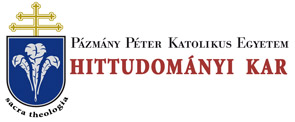Folia Theologica 6. (1995)
János Székely: Mary and Martha how to receive the divine guest?
166 J. SZÉKELY eternal life (10,25.28) as it is for Mary who has chosen the good part21 which will not be taken away from her. Concluding we see how much coherent this first part of the travel account is and how different motives of the Mary and Martha pericope are prepared. We could adduce some evidence here from source critical investigations. It has been observed, that Luke likes to comment, rectify, illustrate, amplify his sources with the help of his proper traditions. He adduces parables to exemplify the preceding or following sayings, creates introductory scenes for sayings, interrupts the discourses by questions etc.22 In our case the 10,25-37 and 10,38-42 may be considered as such clarifying Luke’s additions after a sequence of Q sayings.23 The good Samaritan illuminates the essence of the doctrine taught by the 70/72 and also the nature of the ’way’, while 10,38-42 is a concluding exhortation to hear the word, moreover gives a salvific dimension to the whole journey as ’God’s visit to his people’. A very similar lukan addition about the importance of the word is found in 11,27s in the middle of a discourse. The links of 10,38-42 to the following passages are less strong and also less relevant. The only apparent connection with Lk 11,1-13 is the somehow general theme of discipleship (11,1). The place of Lk 10,38-42 in the lukan theology After having determined the literary context of the Mary and Martha pericope, we shall now examine its conceptual context. First of all, however, it is necessery to say a few words about the structure and peculiarities of the pericope itself. 21 Allusion to the Psalms: the Lord is my part of inheritance (16,5). 22 Cf. G. SCHNEIDER, Lukas, p. 253. Several exemples of this activity are noted in G. SELLIN, Reisebericht, p.111-116. The thesis of this scholar, that Luke generally follows the (hypothetical) order of Q, amplifying it at times, is not always convincing. In our case he affirms that after 10,16 (who listens you, listens me...) 10,21-24 (revelation by the Father to the children, happy those whi hear...) is a logical Q sequence, which would be followed by (the Our Father? and) 11,9-13 (ask and it will be given...). The last sequence isn't an obviously logical one. He doesn't offer much arguments to establish this hypothetic Q sequence. 23 According to some 10,17-20 would be also part of Q, what is however hard to prove.
